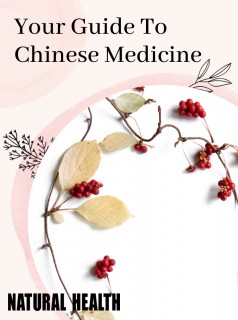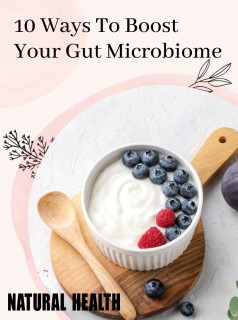Diabetes is one of the UK’s most common ailments but fortunately it can be treated – and prevented. Sarah Stanbury gets some advice from the experts at the College of Naturopathic Medicine
Diabetes is one of the UK’s most common ailments but fortunately it can be treated – and prevented. Sarah Stanbury gets some advice from the experts at the College of Naturopathic Medicine
With diabetes taking centre stage as one of the greatest health issues worldwide, we should all be aware of what causes it, its effects and how to treat and even prevent it. Here’s how:
What’s going on in the body?
Dr Jane Jamieson, CNM’s biomedicine lecturer, takes a look at the various types of diabetes
Type I diabetes
This autoimmune disease, formerly known as juvenile diabetes, occurs when the body stops producing the hormone insulin, for reasons unknown. This is a lifelong condition for which there is no cure. It usually strikes young children.
Type II diabetes
Formerly known as adult onset diabetes, this condition is caused by the body not responding to insulin. This is by far the more common condition and is now known as type II diabetes due to the increasing number of children being diagnosed. Unlike type I diabetes, this condition is reversible and is also preventable. It’s been related to dietary factors, including too much sugar in the diet, and lack of exercise as well as stress (which over works the internal organs) and age.
Understanding insulin
The body needs insulin to regulate blood sugar levels. Too much sugar in the blood stream makes the blood sticky, which causes the tiny capillaries to become stuck together and affects blood flow in the body. The effects of this are far-reaching and may include:
Heart and circulatory problems
Damage to the peripheral nerves and blood vessels, especially in the feet
Damage to the nerves and blood vessels in the retina of the eye, contributing to loss of sight
Damage to the exquisitely fine filtering mechanism in the kidneys, which can lead to kidney problems, infections, high blood pressure and malfunction of the whole body.
The naturopathic approach
Rebecca Edwards, naturopathy lecturer at CNM, gives some advice on diabetes management and prevention
Sticky problem
Released by the pancreas whenever we eat, insulin has the role of carrying glucose molecules into cells, where the body then uses them to manufacture energy. The higher the amount of glucose we take in at once, the more insulin the body releases. So foods high in glucose including sweet, sugary or processed foods and refined carbohydrates such as pasta, white bread and white rice, require the body to release large amounts of insulin.
But, how is glucose delivered into the cells? The membrane surrounding each cell contains several insulin receptor sites. These are tiny areas, which ‘recognise’ insulin and allow it to ‘dock’ onto the cell membrane, delivering glucose into the interior of the cell.
These insulin receptor sites must be able to allow insulin to dock in order for our cells to be able to make energy. However, with increased levels of insulin in the bloodstream, the more cells become insensitive to it, and if glucose can’t enter the cells, then they can’t manufacture energy. Also, unable to enter the cells, glucose remains in the bloodstream, thus causing high blood sugar levels.
Food for thought
Naturopathic medicine focuses on increasing the sensitivity of insulin receptor sites. This allows the body to more effectively allow glucose to enter cells, keeping blood sugar levels constant and maintaining steady energy levels. By doing this we can prevent people from progressing from a pre-diabetic state of insulin resistance and also reverse diabetic status.
Starting with diet, there is a dual focus of reducing foods which decrease insulin sensitivity, and increasing foods which heighten insulin sensitivity.
Nutritional supplements
Alpha-lipoic acid: an orthomolecular nutrient, which helps to sensitise insulin receptor sites, as well as increase the ability of the liver to perform detoxification pathways. Recommended dose is 600mg per day.
Chromium polynicotinate: a trace mineral, which has been proven to be effective in reducing insulin resistance and aiding weight loss. Recommended dose is 1,000mg per day. Please note: Nutritional supplements shouldn’t be used as a replacement for dietary changes.
Watch your weight
Weight loss is often an integral part of diabetic therapy, specifically fat loss. High levels of insulin cause the body to store fat very easily, rather than using it for energy.
Tackle weight issues by eating a healthier diet combined with exercise, but remember that main role of exercise for diabetics is not fat loss. A diabetic who is exercising vigorously will not lose weight if he or she remains insulin resistant.
Get up and go!
Exercise is a crucial part of treating/preventing type II diabetes. The muscles use sugar for fuel, so one of the easiest ways to regulate blood sugar levels is to exercise regularly, encourage the muscle cells to take up sugar when sugar levels are too high and then burn the sugar as fuel.Fit exercise into your daily routine:
Go up and down the stairs as many times as possible
Park at the far end of the car park
Get off the bus one or two stops early
Try to get out of breath three to six times daily
Eat plenty of the following:
John Gavin, lecturer in Traditional Chinese Medicine with CNM, explains the TCM approach to treating diabetes.
From a TCM perspective, type II diabetes is linked to a deficiency in the body’s spleen (digestive) energy. When the spleen’s transporting and transforming function is impaired, it results in ‘damp’ being created in the body, which causes excess weight. Subsequently, the pancreas doesn’t produce enough insulin to moderate blood sugar levels in the body and diabetic symptoms such as excess thirst, hunger and urination arise. In TCM terms, this ultimately leads to depletion of the body fluids and ‘yin’ deficiency. Here are some foods and herbs to help reduce blood sugar levels:
Onions and garlic
Fenugreek
Ginseng tea
Juniper berries
Indian Kino (Pterocarpus marsupium) is shown to regenerate functional pancreatic beta cells and help produce more insulin
Dandelion root protects the liver, which converts nutrients into glucose
Further info
For more information on the College of Naturopathic Medicine (CNM) and the courses offered, visit naturopathy-uk.com or call 01342 410 505.
Article by
Sarah Stanbury
Article by
Sarah Stanbury























